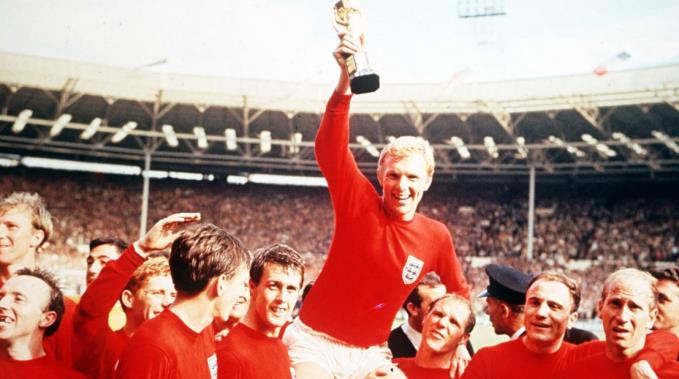IT’S A tale with more twists and turns than the labour leadership contest. When England won the World Cup in 1966, there was a small problem: someone had copped off with said cup, forcing the Footballers Association to make a perfect replica in secret. The original was then found by Pickles the dog (yep, you couldn’t write the script) and both versions were present at Wembley when England won in the final.
Whilst both trophies were plated in gold, the original used silver beneath
Whilst it’s understood that the original was presented to Bobby Moore by HRH Queen Elizabeth II, it was replaced with the replica - unbeknownst to most of the team - once the players returned to the dressing room.
The replica continued to be used at public appearances, until 1970 saw the original returned to FIFA ahead of the World Cup in Mexico: it was awarded to Brazil after their third tournament triumph. A new cup was created for subsequent competitions and England’s replica, meanwhile, was returned to its creator: a silversmith called George Bird, who supposedly kept it under his bed for the rest of his life. We don’t blame him...
Trouble was, then Brazil’s trophy was stolen and, it was claimed, melted down in 1983. Following Bird’s death, Manchester’s National Football Museum collection acquired the replica. Or did it? Unsurprisingly, by this point, nobody was 100% sure which was which.
 Bobby Moore with the real thing... we think
Bobby Moore with the real thing... we thinkSo the NFM decided to solve the enigma once and for all by taking their trophy to be scanned at The University of Manchester’s Henry Moseley X-ray Imaging Facility, which received a Queen’s Anniversary award in 2014 and is one of the world’s most comprehensive facilities of its kind.
Scientists viewed the item in 3D, using a newly-developed CT scanner that revealed its elemental composition using x-ray fluorescence.
Whilst both trophies were plated in gold, the original used silver beneath whilst the replica used bronze. The analysis found no silver present but there were strong signals for tin and lead, suggesting the museum has the replica.
And so ends the mystery of the doppelganger.
Dr Kevin Moore, Director of the National Football Museum, said: “While we’ve always been fairly certain that we have the only surviving version of the Jules Rimet trophy, there has always been a slight question mark over which one it was. We’ve been delighted to work with The University of Manchester on solving this mystery once and for all.”
You can find the trophy at the National Football Museum in Manchester's Cathedral Gardens nationalfootballmuseum.com.
 Powered by Wakelet
Powered by Wakelet







